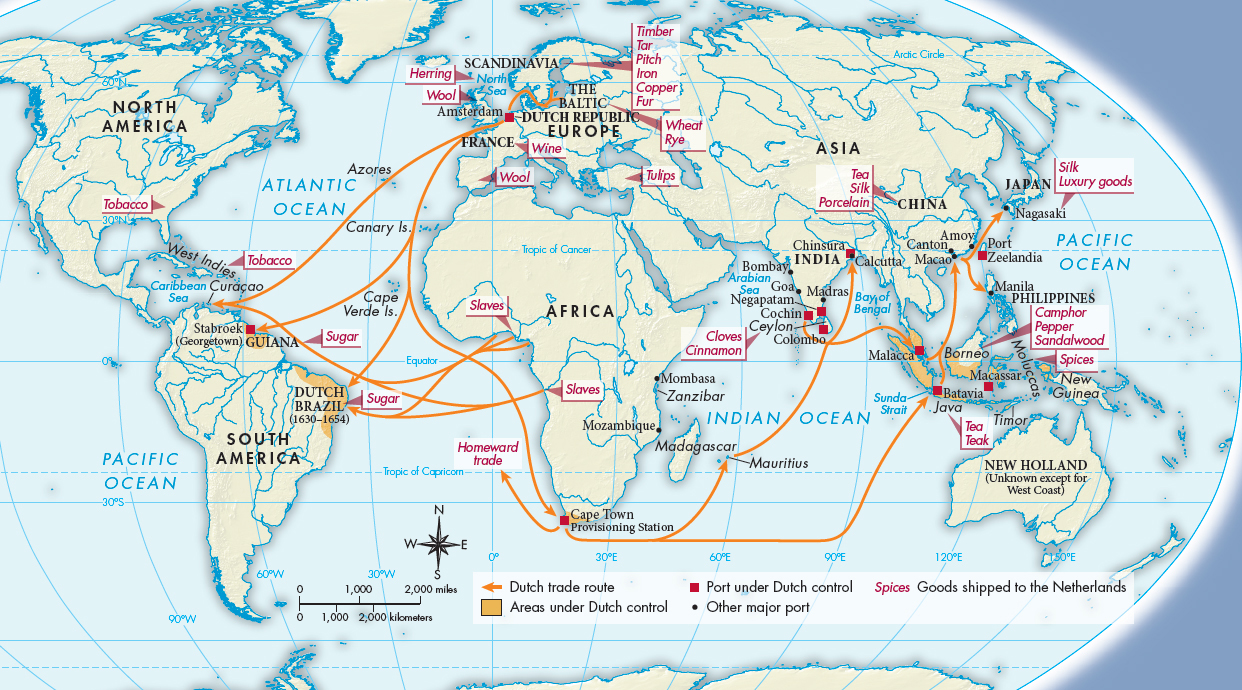Understanding World Societies:
Printed Page 535
The Dutch Trading Empire
The so-
In 1599 a Dutch fleet returned to Amsterdam from a voyage to South East Asia carrying a huge cargo of spices. Those who had invested in the expedition received a 100 percent profit. The voyage led to the establishment in 1602 of the Dutch East India Company, founded with the stated intention of capturing the spice trade from the Portuguese.
In return for assisting Indonesian princes in local squabbles and disputes with the Portuguese, the Dutch won broad commercial concessions. Through agreements, seizures, and outright military aggression, they gained control of the western access to the Indonesian archipelago in the first half of the seventeenth century. Gradually, they acquired political domination over the archipelago itself. The Dutch were willing to use force more ruthlessly than the Portuguese and had superior organizational efficiency. These factors allowed them to expel the Portuguese from Ceylon and other East Indian islands in the 1660s and henceforth dominate the production and trade of spices. The company also established the colony of Cape Town on the southern tip of Africa as a provisioning point for its Asian fleets.
The Dutch also aspired to a role in the Americas (Map 18.4). Founded in 1621, the Dutch West India Company aggressively sought to open trade with North and South America and capture Spanish territories there. The company captured or destroyed hundreds of Spanish ships, seized the Spanish silver fleet in 1628, and claimed portions of Brazil and the Caribbean. The Dutch also successfully interceded in the transatlantic slave trade, establishing a large number of trading stations on the west coast of Africa. Ironically, the nation that was known as a bastion of tolerance and freedom came to be one of the principal operators of the slave trade starting in the 1640s.
